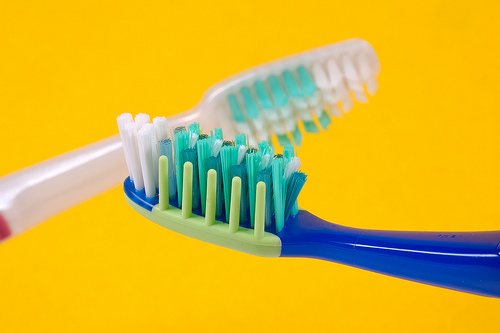Normal healthy gums, along with the supporting framework, appear firm and pink. This gum collar provides a strong support for the teeth. When there is an inflammation of the gums and the deeper structures of the teeth, this condition is called periodontitis or pyorrhea. Knowing about the symptoms of each of the periodontal disease stages can help you understand the disease better and get timely diagnosis and gingivitis treatment.

The Periodontal Disease Stages – The Parts Of The Tooth They Affect
The structures supporting a tooth are:
- The gingiva or gums, which is the soft pink-colored tissue that surrounds the neck of the teeth
- The jawbone, which supports the tooth and holds it in the socket
- Periodontal ligaments, which connect the teeth to the socket
The periodontal disease stages affect these three structures when they cause an inflammation.
The Cause Of Periodontitis
When gingivitis causes worsen, they increasingly affect various structures of the oral cavity, leading to periodontitis. Here’s what is involved in the whole process.
- Various studies have demonstrated that plaque (a thin film formed on the tooth surface by food debris) and bacteria constitute the detrimental combination resulting in periodontitis.
- Bacteria are normally present in the mouth. However disease-causing bacteria tend to appear in plaque that is not removed on a regular basis by oral hygiene procedures like brushing and flossing.
- Plaque hardens over time to form tartar, which cannot be removed by brushing. Once tartar has accumulated, getting the teeth cleaned by your the dentist becomes the only option available.
- The plaque/tartar causes irritation of the gums leading to the infection and inflammation of the gums and the surrounding structures. This condition is called periodontitis.
The Differences Between Gingivitis And Periodontitis
- When the inflammation is confined to the gum layer only, it is known as gingivitis. This is a very common condition that is easily reversible.
- If gingivitis remains untreated the infection progresses into deeper parts of the oral cavity and involves the bone and other structures surrounding the tooth, causing periodontitis.
- In periodontitis, the loss of bone is irreversible and requires a more aggressive form of management as compared to gingivitis.

The Different Periodontal Disease Stages
Periodontitis passes through various stages before finally resulting in either the tooth falling off or it being removed by the dentist. Here are the periodontal disease stages described progressively.
Stage 1: Gingivitis
- The accumulation of bacterial plaque along the gum line results in gum disease or gingivitis.
- The gums then become red and puffy, and have a tendency to bleed readily.
- The person with gingivitis will usually experience no pain at this stage.
Stage 2: Early Periodontitis
- When the accumulated plaque is not removed, then gingivitis continues to cause the gums to be pulled away from the teeth.
- This allows for the formation of “pockets” (gaps of varying depth between the gums and the teeth).
- These periodontal pockets are filled with bacterial plaque, calculus (tartar), food debris, and pus.
- At this stage the infection has started the process of bone damage.
- Pain may or may not be present during this stage.
Stage 3: Moderate Periodontitis
- As the disease advances, the gum infection spreads, resulting in further loss of bone support.
- At this stage, the condition causes pain and the teeth may become loose or shift in alignment.
- The gums recede causing more of the tooth to be exposed.
- The depth of the periodontal pockets increases.
Stage 4: Advanced Or Severe Periodontitis
- In the advanced stage of periodontal disease, the patient experiences a buildup of pain and pressure due to the accumulation of pus.
- The teeth become so loose that they may fall off.
- In most cases, no treatment can save the affected tooth, and the removal of the tooth is the only option at this juncture.
If you notice any gingivitis symptoms, it is best to approach your dentist for immediate treatment. This will prevent the periodontal disease stages from progressing further, saving you unnecessary pain and the need for the removal of one or more teeth. Ideally, you should learn how to prevent gingivitis, so that you don’t need to deal with this condition in the first place.